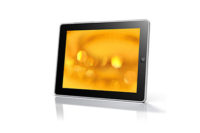Before e-mailing me that the headline is an oxymoron, be aware that “good” refers to the homegrown data that individual PHCP, PVF and HVACR wholesalers and manufacturers created years ago to make it easier to use their computer systems. But as more and more trading partners computerized, company-unique data became “bad”; no one but the originator of the data could understand it, either in paper or electronic form. This automation equivalent of the Tower of Babel continues to cause problems that cost a lot to correct and also hinder trading partners from further reducing supply chain costs.
To prevent many of the problems caused by company-unique data, and help members in other ways, the American Supply Association created the Industry Database (IDB). But a recent “poll” of some members showed that the IDB may face an uphill battle.
Let's look at the history and benefits of company-unique data; problems it now causes and the costs to fix them; efforts of some industries and associations (including ASA) to establish industry-specific standardized data; and reasons why standardization hasn't been widely accepted in some industries.
WHY IT'S CALLED “GOOD” DATA
When PHCP, HVACR and PVF distributors and manufacturers first started using computers or sending invoices to data processing service bureaus, they faced a challenge: in order to process data, each item had to be permanently assigned a unique, permanent code number, description, unit of measure, purchase pack quantity, minimum purchase quantity, and on and on.They created their data when there were no standards - long before Universal Product Codes (UPC) were developed for consumer items, let alone wholesale items, and before bar codes were created. Each company created data that was easiest for it to use. For example, item code numbers were based on item characteristics/functions, so most system users could mentally derive most item codes without reading any “code books”; but each company used its own arrangement and abbreviation of characteristics and functions. This data really was “good” because it enabled people at each company to quickly and accurately enter data and easily understand reports and displays.
Individualized data worked well through new generations of hardware and software until a critical mass of wholesalers, distributors, customers and manufacturers computerized. Then, data differences that were tolerated in the pre-computer days became a time-consuming burden as people had to read and adjust some data, including EDI data (which this author has more than once seen being manually translated from one system to another). And individualized data that is transmitted up or down a supply chain requires time-consuming human intervention, which discourages many companies from participating, which in turn prevents further cost savings and increases in customer service. Today, individualized data is really “bad” data.
PROBLEMS AND COSTS OF BAD DATA
In his editorial in the February 2004 issue, Jim Olsztynski addressed a study conducted by IDEA (Industry Data Exchange Association), an entity established jointly by the electrical manufacturers and electrical distributors associations. IDEA defines standard data, and helps subscribers convert their unique data to the standard data.The study dealt with electronic transactions, but the problem-revealing results apply to paper-based transactions as well, including transactions with distributors' customers who are not automated. For the 18 participants, among the findings were that only 5% of some 74,000 records could be matched on all fields between distributors and manufacturers; 25% of the mismatches were due to different catalog numbers for the same item; 60% of the records were mismatched on order data and invoice fields; more than 8,700 items were defined only in the distributors' systems, not those of manufacturers; and some 30,000 items were defined only in the manufacturers' systems. This is the error rate among companies that were confident enough to submit their data; it's probably worse for those that do not subscribe to IDEA.
The study estimated that for each $10 million in annual sales, a distributor would lose $73,000 in profits; a manufacturer would lose $97,000. For the entire industry, the loss was estimated at some $1.2 billion per year. Based on the number of transactions that require human effort to “synchronize,” someone estimated that it is costing $60 to $80 to adjust the data in every purchase order or sales order needing synchronization.
PHCP, PVF and HVACR distributors are very much like electrical distributors, so the results of this study are “the handwriting on the wall.” See Jim's editorial for further details (SUPPLY HOUSE TIMES February 2004, page 60).
PIONEERS IN DATA STANDARDIZATION
Those UPC codes and bar codes mentioned above were developed by manufacturers, wholesalers, distributors and retailers of high-volume consumer items: groceries, health and beauty aids, household cleaning products, etc. These companies created standardized data (including UPC codes) long before high speed bar code scanners were installed in checkout counters; long before Supply Chain Management (SCM) became the holy grail of cost reduction; long before RFID (computer) chips were invented. They realized that standard data was an absolute prerequisite to economical future uses of automation - at all levels of commerce, not just the supermarket. (SCM refers to the totally electronic, people-less design, manufacture and distribution of items. RFID stands for Radio Frequency Identification, which involves computer chips that store large amounts of data that users can both update and read.)
The industry that is light-years ahead of any other industry when it comes to standards is the electronics industry. Engineering/design firms, suppliers, manufacturers and distributors established “Rosettanet,” an organization to develop standard data and more. (The “Rosetta stone” is a tablet found in Egypt that contains hieroglyphics and their equivalent Greek word(s). It enables people to determine the meaning of the hieroglyphics on many monuments.) Rosettanet has defined worldwide data and transaction formats/content for designing, manufacturing (including sourcing components), and distributing various electronic products. The data and transaction formats/content have been created to enable efficient Supply Chain Management at all levels, and they are now being revised to accommodate RFID. It's no surprise that this industry is the leader in using SCM.
ASA'S PROJECT TO ELIMINATE BAD DATA
Just as the electrical, electronics and consumer items industries recognized the costs and obstacles to future progress of non-standardized data, so did ASA. Through the Center for Advancing Technology, ASA has established the IDB, which includes an item's UPC and bar codes, description, image (for the subscriber's Web site), labor units for installation, pricing data, specifications, catalogs and much more.In addition to initially synchronizing the data of each subscriber with the standard data, IDB maintains that synchronization as data changes (especially prices). And subscribers can use the data to create custom catalogs and job submittal documents.
But the “poll” mentioned at the beginning of this article doesn't bode well for IDB. This author gave a presentation to a dozen ASA members this past winter, including computer personnel, during which I first talked about the costs of nonstandard data. Then, without mentioning the name ASA, I asked for a show of hands by those who knew what IDB is; no hands went up.
No wonder that participation in the IDB is not at the level it needs to be. Many people apparently don't know about IDB, and don't know that their companies are incurring substantial costs because of nonstandard data. The lost profit margin for a typical ASA member is a good chunk of its overall profit potential, and IDB can largely avoid these costs. IDB and its cost savings and benefits need to be publicized more often.
If PHCP, PVF and HVACR distributors really want to reduce supply chain costs, and really want to compete with the “big boxes,” participation in IDB is a necessary step. In spite of the less-than-expected use of e-commerce and SCM, the use of both of these technologies will continue growing, and will someday be the dominant way of doing business.


